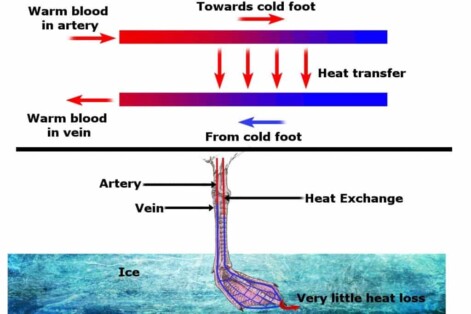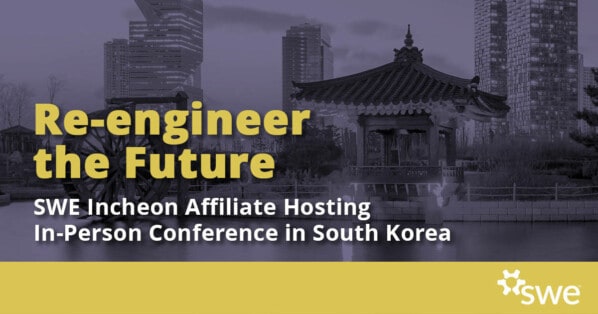In celebration of #NationalMentoringMonth, we reached out to SWE Member Gretchen Hein, who recently helped host a webinar with SWENext partner Boolean Girl. Learn more about Gretchen’s background, her career and why she’s passionate about mentoring the next generation of engineers.
 Name: Gretchen Hein
Name: Gretchen Hein
Job title: Senior Lecturer, Manufacturing and Mechanical Engineering Technology, Michigan Technological University
Field of engineering or tech: Engineering Education
SWE member since: 2011
Tell us a bit about yourself. What initially inspired your interest in STEM?
I grew up in the 1970’s and can recall my mom calling me into the house to watch the Apollo Missions take off and land. Like many children, I wanted to be an astronaut. As I grew older, I took all the drafting classes, both architectural and mechanical, that my high school offered; these were the precursor to CAD classes. My career goal morphed into becoming an architect. My dad, a mechanical engineer, encouraged me to look at engineering. At first, I said no. Then I interviewed at Allison Gas Turbine Division, GMC (now Rolls-Royce Corporation). This interview was part of being accepted into GMI Engineering and Management Institute (now, Kettering University). I was totally intrigued with gas turbine engines, and their design and manufacturing processes. I thought that these engines were the combination of being an architect and an astronaut. I became an engineering student and majored in Mechanical Engineering with an Electrical Engineering minor.
Where did you go to school and what did you major in? What has your career been like?
I already mentioned that I went to what is now Kettering University for my undergraduate degree. While there, I was a SWE member. Kettering is a co-op university and upon graduation, I worked for the same company I co-oped with. After a few years of working full-time as an engineer, I realized that I could have a different career path with a Masters degree. I earned my Masters in Civil Engineering at Purdue University. It turned out that I loved graduate school. After my Masters, I continued my education and earned my doctorate at Michigan Technological University in Environmental Engineering. Upon graduation, I was awarded an Environmental Policy Fellowship through the American Association for the Advancement of Science (AAAS). As a AAAS fellow, I worked for the Environmental Protection Agency in Washington, DC on federal regulations. Once that was completed, I returned to Michigan Tech where I completed a post-doc and finally, became a faculty member. I have taught first-year engineering courses, but over the past several years, my focus has been on Thermodynamics, Fluid Mechanics and Heat Transfer.
Did mentors play a big role in your STEM journey? If so, how?
This is a hard question to answer because “mentorship” has only become formalized over the past 10 years or so. Informally, I have had several mentors. Early in my career, my immediate supervisor strongly encouraged me to go to graduate school. He said that there were a limited number of women in technical careers at the plant. He stated that I needed something to make myself stand out and a Masters would do that. I took an educational leave of absence and went to Purdue University. While there, Dr. James Alleman was instrumental in encouraging me to complete my Masters when there were challenges that made me want to quit. Once I finished my Masters, he encouraged me to continue with my education and work towards a doctorate. He even visited Michigan Tech to see how I was doing. At Michigan Tech, Dr. Neil Hutzler was not only my faculty advisor, but he was a great mentor. Anyone who has written a dissertation has hit the point where it just seems too overwhelming to finish. He was the main person who kept me going.
You recently volunteered to help host a webinar with our SWENext partner, Boolean Girl. What inspired you to give up your free time to speak to young girls?
Outreach is one of my favorite parts of being a SWE faculty advisor. I started a SWENext Club at Lake Linden-Hubbell Schools to help students compete in national science competitions, eCYBERMISSION (middle school) and the Junior Science and Humanities Symposium (high school). With the pandemic, I was unable to meet with them and do science projects. I was actively looking for an outreach opportunity when I saw the SWE request for Boolean Girl Ambassadors. I never felt that I was “giving up my time”. I knew that these girls would give me more than I could ever give them. Their gifts of curiosity, enthusiasm and interest were just what I needed.
“I never felt that I was ‘giving up my time’. I knew that these girls would give me more than I could ever give them. Their gifts of curiosity, enthusiasm and interest were just what I needed.”
What was the topic of your webinar, and how do you believe it helped attendees understand lessons or principles of STEM?
Every semester in the Thermodynamics/Fluid Mechanics and the Heat Transfer classes I teach, we have Duck Day. It is hands down the most popular session. Students who are not even in the class come to learn about ducks and how they relate to heat transfer. It was this topic that I adapted for Boolean Girls.
Many birds, and aquatic birds in particular, have the arteries and veins in their legs located adjacent to each other. Heat is transferred from the arteries to the veins to cool down the arterial blood such that the heat transfer from the duck’s feet is minimized. In fact, the temperature of a duck’s feet can get down to almost freezing. The heat from the arterial blood warms the blood in the veins. This heat exchange gets the venal blood temperature back up to the duck’s core body temperature of about 104 deg F and prevents hypothermia.

The fun part of this Boolean Girl session was the DUCK, Bubba. I showed the duck to them and explained cool features about ducks. (Their wings are lighter colored so that when they are flying, they are harder to see. Down for feather pillows comes from their inner feathers. Female ducks will pluck their down and put it around their eggs to protect them. This might be where the saying “feather your nest” comes from. Female ducks are very loud and noisy, while male ducks are quieter. A male duck’s tail feathers curve up in the back. Ducks, and other birds, have the ability to expand and contract their blood vessels. This also can either enhance heat transfer or slow it down.) Then I explained the heat transfer part. Throughout the talk, I was holding Bubba. The girls could watch him move, peck at my hands, and just be a duck.
Everyone learns better when the lesson is “fun and interesting”. With the duck, I was able to show them something that met these criteria. Suddenly, they were interested in heat transfer, which is the science and engineering concept that I wanted them to learn. Both the teacher and the students left happy.
How was the experience overall? Were there any questions or feedback from attendees that surprised or pleased you?
Boolean Girls focuses on girls ages 8-14. Their website states: “….our students learn coding and engineering skills to prepare them for a broad set of careers, but they are too busy having fun to notice”. This is what I noticed about the girls. They were avidly involved. Before the session began, they were chatting through Zoom with each other. Many of the girls have established virtual friendships through the program. This really surprised me and showed me how important a friendly, supportive virtual environment can be. When the moderator began the session, all of a sudden, the girls shifted their attention to me. Many of the younger girls were literally bouncing with excitement when they first saw the duck. The hour-long session seemed to be so short. Like me, the girls wanted to stay and talk more.
Everyone except Bubba (the duck) had a great time. (I am always amused to see how he acts when he returns to the barn with the other ducks. He waddles to them wagging his bum in agitation while quacking. He has to be saying something like: “You should have seen what I had to do today….”) I was surprised with the variety of questions. They ranged from what it’s like to live on a farm and teach engineering, what is college like, what do you do in engineering school, how does programming relate to engineering, what’s it like to be an engineer, why did I want to be an engineer, can animals help us design things to what it’s like to build an engine. The animal question was fun to answer. For example, engineers are studying how bats fly because they fly at a low velocity and is really applicable to drones. If we could figure out a way for the blood vessels in humans to expand and contract like birds’ do, we could decrease the need for stents. There were many more questions than there was time.
Why do you think it’s important for women to share their lessons with and offer guidance to peers, direct reports, students, and strangers? In other words, why is mentorship important?
Like outreach, mentorship is a two-way street. I have had so many mentor-mentee relationships and many of them through SWE. In most of them, the mentor and mentee roles have switched back and forth between the two of us. Susan Schlett, SWE-Wisconsin, has been instrumental in encouraging me to become more involved in SWE. Jennifer Winnikus and Kaitlyn Bunker, both former SWE at Michigan Tech student members and very active professionally in SWE have been mentoring me for years, even though we started our mentor-mentee relationship through me advising them in our student section. Dr. Winnikus is currently encouraging me to post a video version of Duck Day. Through mentoring, we lift up and encourage each other. The result is that we all grow and improve.
My older daughter is a high school senior and applying to colleges. I never realized that she viewed me as anything other than her mom until I read her college application essays. She mentioned that without my encouragement throughout her school years, she would never have pushed herself to participate in national science competitions. It is because of her and other youth, that I became active in outreach. Last year, we started the SWENext club I mentioned earlier. I watched the SWE student members work with middle schoolers on their science experiments. One team developed electrical engineering outreach activities. The Tech and middle school students took these activities to four local schools. In this case, the mentees (middle school students) became mentors as they worked with elementary students on the activities. We are using these activities again this year as virtual outreach activities. Based on the success of them, we have expanded into developing more activities that are related to environmental engineering. This growth is directly due to mentoring and all started with me mentoring a single young girl.
Over the past 20+ years, I have mentored our SWE student members at Michigan Tech. They have gone on to become successful engineers, and my friends. It is these connections that mean so much to me. Annually, at the societal conference, like many universities, Michigan Tech has an alumni event. It wasn’t until Dr. Janet Callahan, our Dean of Engineering, pointed out that our alumnae were finding and talking with me. It was at this point that I realized the long-term impact of mentoring. Not only was I getting to know these women as professional, competent individuals, but these women are now in their engineering and SWE careers. They have become mentors and are not only encouraging others in their careers, but are also providing the inspiration for girls to become engineers.
Last, I have been trying to understand what it meant to be “the first” woman or other underrepresented group to pursue an engineering degree. How did these people succeed when so many of their peers thought that they did not belong? Although I have walked into a room where I was the “only” woman, I have never experienced being the “first” woman because there were women engineers before me. Without knowing it, these women established the path for us as women engineers. Like them, I want to provide the same encouragement and support to women who are beginning their engineering careers such that the path becomes smoother for them and other generations. We are only here because others took risks and established the path.
Thank you for the opportunity to discuss my personal engineering journey, my mentoring experiences, and, most importantly, my interactions with Boolean Girls.
Know a young girl interested in STEM, or are you looking to guide the next generation of engineers? Become a SWENext Adult Advocate! SWENext is a way for girls to become a part of the SWE engineering community as a student through the age of 18. SWENexters have access to programs, mentors, and resources designed to develop leadership skills and self-confidence to #BeThatEngineer and succeed in a career in engineering or technology.
Related content:
- SWE Members Share Their Experiences on the SWE Mentor Network
- SWE Members: Join the New SWE Mentor Network
- SWEet Wisdom: How do Mentors Make a Difference?
- Podcast: The Benefits of Mentorship with Cathy Meyn
- “Boolean Girl” Is on a Mission: Teach Girls to Code and Build Electronics
- “Boolean Girl” Is Full STEM Ahead With Online Webinar
Author
-

SWE Blog provides up-to-date information and news about the Society and how our members are making a difference every day. You’ll find stories about SWE members, engineering, technology, and other STEM-related topics.






